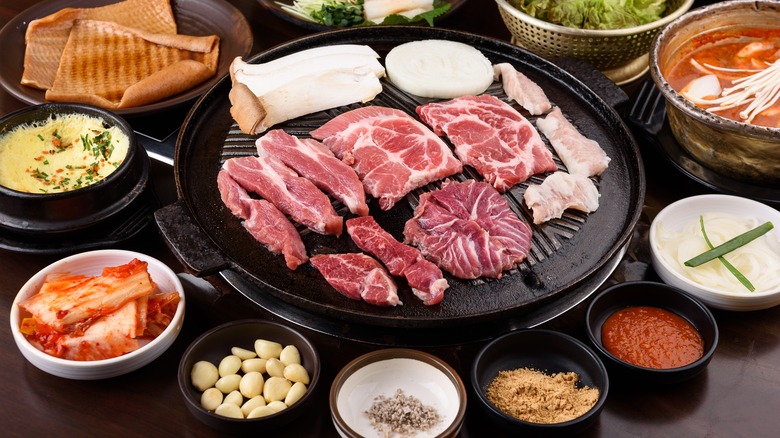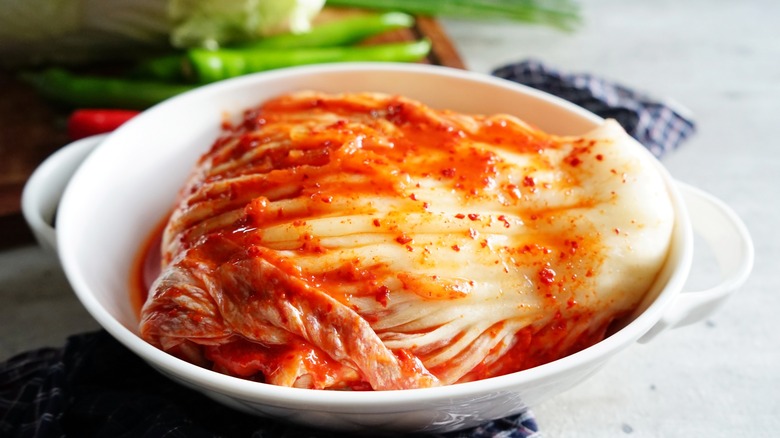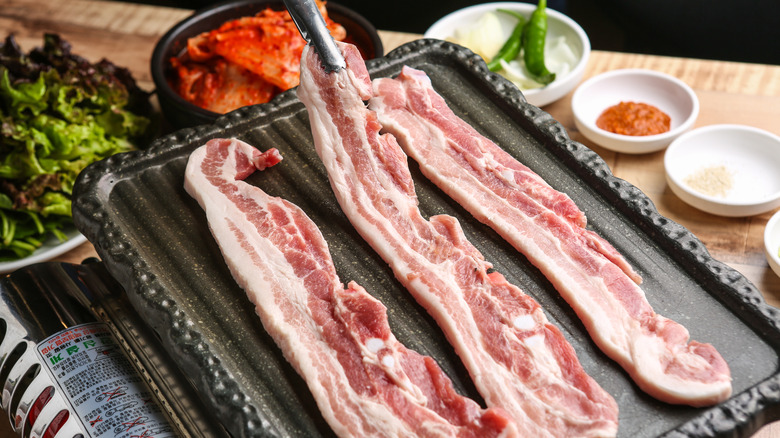Never Ignore This Red Flag At A Korean Barbecue Restaurant
In the United States, if someone says they're having a barbecue, they're probably thinking of burgers and hot dogs. In Korea, however, barbecue looks a bit different. Rather than firing up the outdoor grill, Korean barbecue focuses on gathering around an indoor grill that's often built right into the table. Then, diners cook up different cuts of seasoned meat, seafood, and veggies and pair them with a number of traditional Korean dishes called banchan.
If you want to try Korean barbecue for yourself, you don't want to just drive down to the closest joint to your home. Instead, there are a few things to keep an eye out for. John Bach, executive chef at Seoul Food KBBQ, spoke with Daily Meal in an exclusive conversation and provided a few insider tips for finding a great spot to eat at. He explains that it's all about the kimchi. "Avoid any place that either doesn't use napa cabbage for their kimchi or has a kimchi with a sweet aftertaste."
Why the cabbage used for kimchi is so critical
John Bach explains that the reason the cabbage is such a giveaway is that, often, if you're not served baechu kimchi at a Korean barbecue spot, chances are the joint isn't Korean-owned. "After traveling through nearly every major city in America and the rest of the world, I've found many non-Korean owned Korean restaurants that, in all fairness, try their best to make kimchi with no reference to the real deal," he explains, adding, "They almost always end up using green cabbage or make their kimchi so sweet that it can pass as a dessert."
One reason why napa cabbage is used is thanks to years of tradition. However, it also affects the taste of the dish. It has a clean, green aroma but also has a slightly sweet flavor that can offset the spiciness of the kimchi seasoning. Other cabbage varieties might lead to a more bitter taste that doesn't balance out the spicy, savory taste of the seasoning. At the same time, its texture works well for the fermentation process. In the winter, it ferments more slowly and lends to a crisper bite, while in the summer, it ferments more quickly and has a softer texture. Different cabbage varieties, however, may ferment at different rates and may not have the same soft consistency with a slight crunch on the thicker parts of the cabbage that baechu kimchi has.
What if you do wind up at a not-so-great spot?
If you've found yourself at a Korean barbecue restaurant and you notice the kimchi isn't made with napa cabbage, don't panic: John Bach says to "stick with the non-marinated meat." At Korean restaurants, some dishes, such as beef bulgogi, are prepared with special sauces and seasonings. However, if you already know the place isn't likely Korean-owned, avoiding these sauces will still get you a great cut of meat without running the risk of poorly made meals.
At the end of the day, Bach advises, "Just try everything and see what you like. Korean food took a very long time to become popular in Western culture because we didn't try to appeal to anyone but ourselves and never expected anyone else to like what we like." Even though it may not have the same flavor or the wide range of dishes available in legitimate Korean BBQ spots, you're bound to stumble across something that strikes your fancy.


